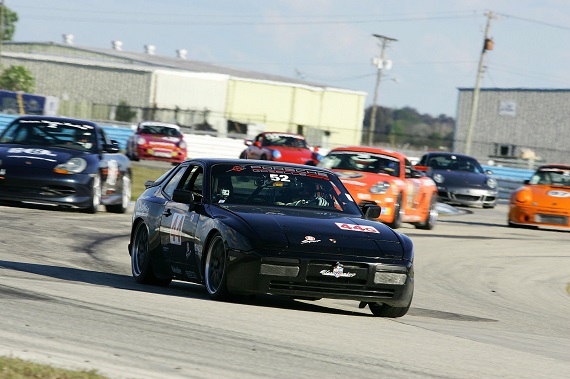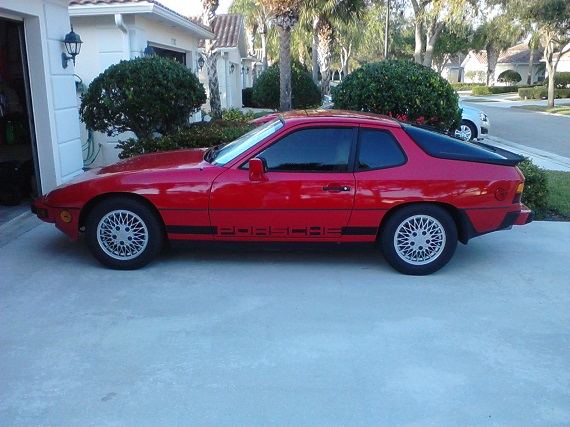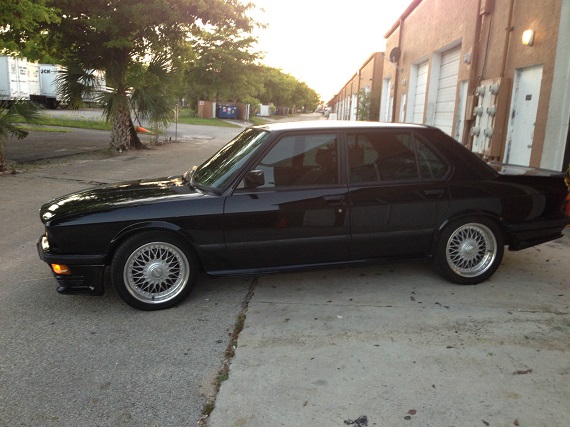When it comes to rare 1980s BMWs, the M635CSi is not the rarest but it’s one that always makes me dream. There’s a look that the European-spec E24s had that just is somehow much better than the U.S. spec cars to me. They look lighter, more lithe and aggressive. It certainly helps that under the hood lies the original Motorsport GmbH engine too; unencumbered by catalysts, the M88/3 gives you the M1 experience in a much more affordable package. Lighter weight, more power, better looks – what’s not to love with the M635CSi? And this car has the double trifecta too; the above attributes coupled with one-owner history, a unique color and low miles. Put that together with some great photographs and it makes one compelling package:
Author: Carter
Without a doubt, for many years my favorite sleeper deal in the realm of factory Porsche race cars was the 944 Turbo Cup. Constructed for one-make support races around the world, the Turbo Cup model has some really neat features – notably, the inclusion of a healthy amount of magnesium to help lighten the car, plus a bit more boost to motivate it. For some time, 944 Turbo Cups were just downright cheap for a full factory racer, but recently they’ve spiked up in value and are now pretty much out of the reach of most mortals. Of course, if you’re willing to forgo the factory Cup build status and a few of the more pricey magnesium details like the original wheels, you can still find great track or race bargains in the 944 Turbo:
CLICK FOR DETAILS: 1989 Porsche 944 Turbo Race Car on eBay
Comments closedIf for some time the Porsche 944 is one of the most under appreciated cars in the 1980s German car world, the 924 is even the more red-headed stepchild. But get past the stigma of the 924 as the “poor man’s Porsche”, and the details are quite good. They’re nice looking, aerodynamic coupes that are rear drive for enthusiasts. Like the rest of the Porsche lineup from the late 1970s and 1980s, they had great build quality overall and were solid products. Many of the “big brother” 944 items work on the 924, too – especially true in the later 924S models, so they can be updated and modified just like the 944s. They enjoyed a rich racing history in both naturally aspirated and turbocharged variants, with the first “Carrera GT” being a 924 model. Plus, the 924 was the development model which resulted in the much more prized 944 and 944 Turbo. And within the lineup, there are really some great hidden gems of classic cars that can be had on a budget. Today I have two nice examples of some of the rarer models of the 924; a late run 924 Turbo and a last of the breed 924S Special Edition:
CLICK FOR DETAILS: 1982 Porsche 924 Turbo on eBay
6 CommentsThere is something inherently appealing about buying an older car. If you’re willing to forgo the glam and glitz – and importantly, the warranty – of a new car it’s amazing the deals that you can get. A Volkswagen Phaeton is basically a Bentley underneath, and you can get a decent example for only $8,000 today, for example. Of course, in doing so you’re taking some risks – older cars are a great deal up front, but you’re buying something that has been used – so of course, there will be some issues. Or, in the case of really complicated cars, a lot of issues. For example, I can’t imagine what the used car market on the brand new S-Class cars is going to be in a few decades. They are going to be close to throw away cars because no one is going to be stupid enough to want to fix all of the massively complicated electronics on them as an independent and no one will be able to afford having the dealer fix them up. Back up a few decades, of course, and cars weren’t nearly as complicated so it’s at least easier on the surface to contemplate what was a cutting edge car with a lot of miles; in 1988, it didn’t get much more cutting edge or appealing than the BMW M5:




